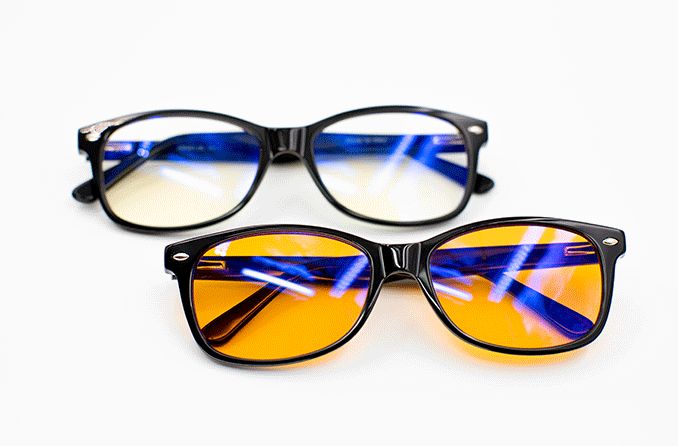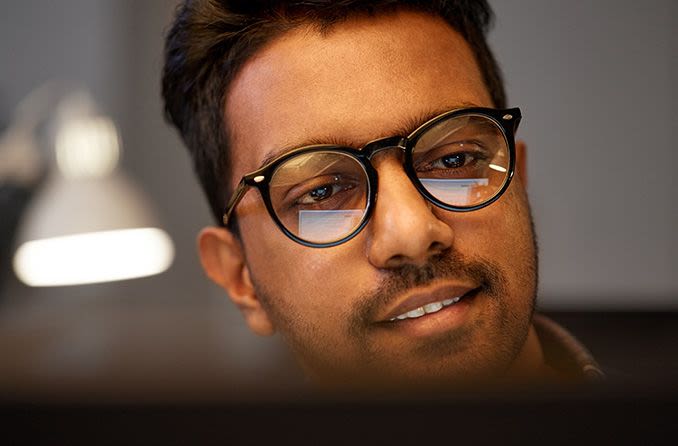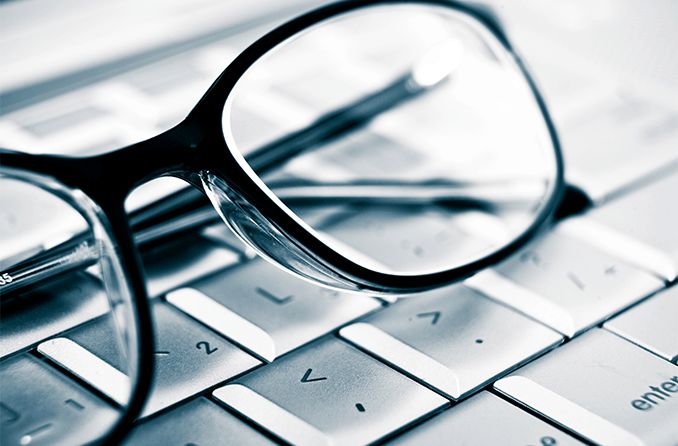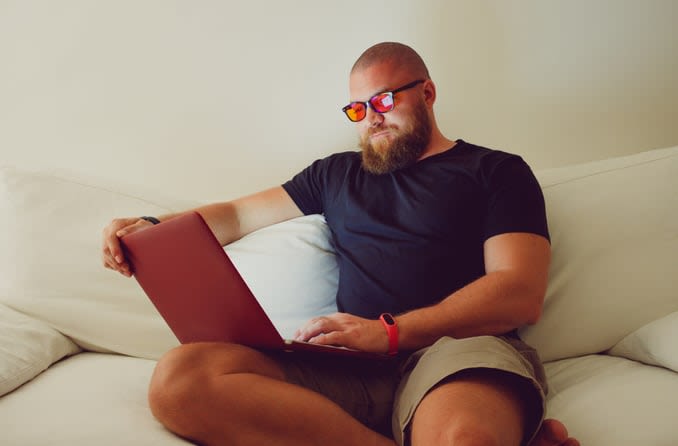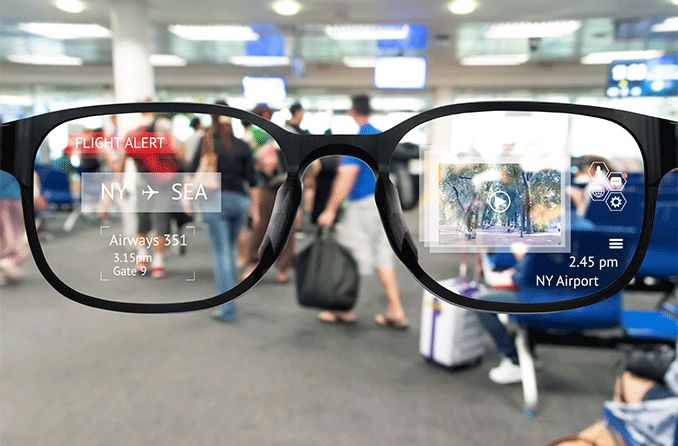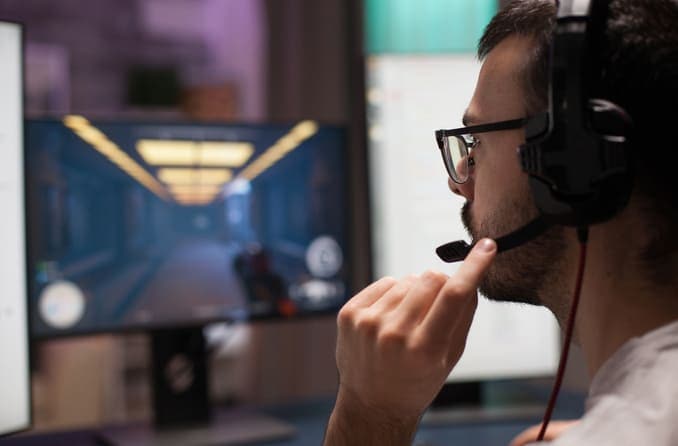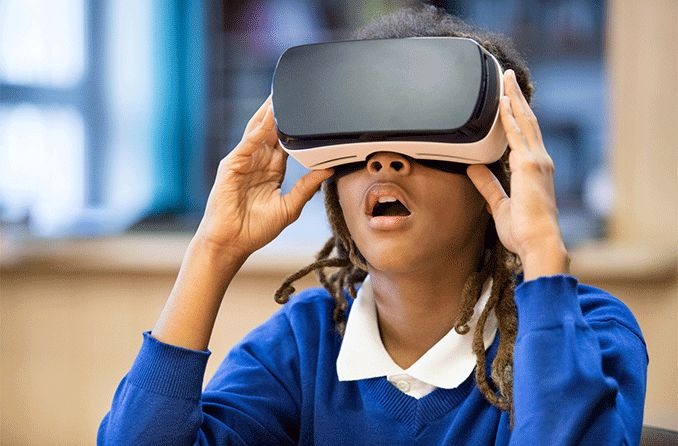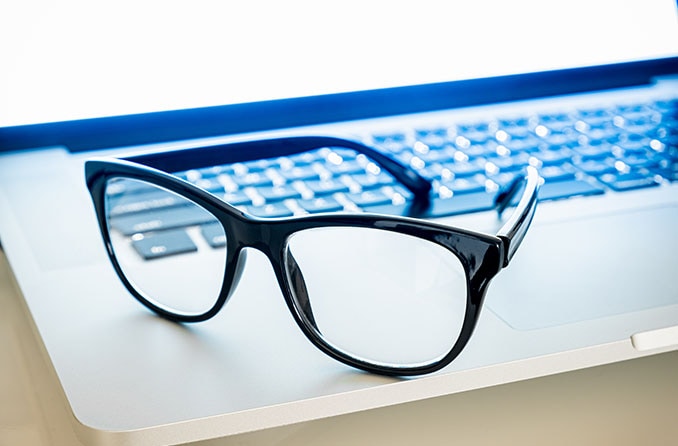Blue light-filtering glasses are often used to improve eye comfort when using digital devices.
But different “blue light glasses” filter different amounts and types of blue light. And there currently are no standards that say how much blue light these glasses should filter to keep your eyes comfortable.
This article will help you make sense of what to look for and what to expect when shopping for blue light glasses.
Blue light glasses: The basics
It’s important to know that all blue light is not the same. The term “blue light” encompasses a broad range of light, with different wavelengths and amounts of energy.
The energy of visible light (including HEV blue light) is determined by its wavelength, which is measured in nanometers (nm).
The entire blue light spectrum includes HEV light with wavelengths ranging from 400 to 500 nm. Shorter-wavelength (400 to 450 nm) blue-violet light has more energy than longer-wavelength (451 to 500 nm) blue-turquoise light.
Electronic devices, like smartphones, computers and TVs, give off LED blue light. The blue light emitted can vary depending on the manufacturer or device setting, but typically includes both blue-violet and blue-turquoise light. Blue-turquoise light can have an effect on your circadian rhythm, or your sleep-wake cycle.
Generally, blue light glasses with clear lenses filter up to 20% of blue light, while blue light glasses that have a yellow or amber tint tend to filter more blue light than those with clear lenses. Both types of glasses tend to filter blue-violet light predominantly.
Some blue light glasses with orange or other specialty tints can filter a large portion of blue light, including some blue-turquoise light, but these lenses significantly affect your color vision as well.
So, it’s actually more important to know what type of blue light your glasses are protecting you from, rather than the percentage of total blue light being filtered by them.
SEE RELATED: Should I buy blue light glasses for my kids?
How blue light glasses are tested
You can find virtually anything on the internet — including easy at-home ways to test your blue light glasses.
These online blue light tests might be useful to check if tinted lenses filter some blue light, but they aren’t sensitive enough to measure the blue-violet light-filtering capacity of clear (or only lightly-tinted) blue light glasses that most people prefer.
The only proven way to accurately test blue light glasses is with an instrument called a spectrophotometer (also called a visible spectrometer).
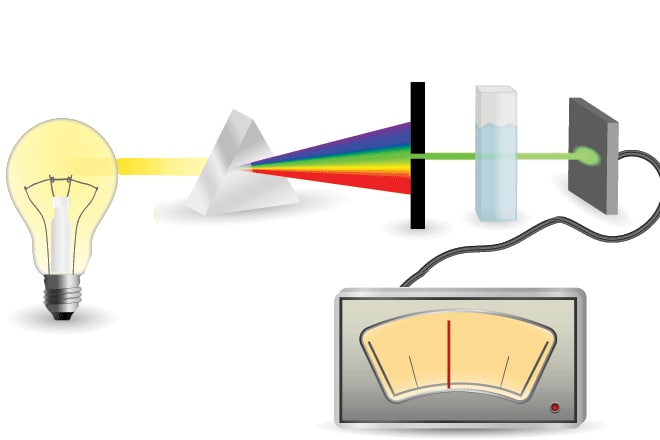
A simplified diagram of a spectrophotometer.
A spectrophotometer is a laboratory instrument that splits light from a full-spectrum visible light source into its component wavelengths (usually in 10-nm increments). A lens or other optical sample is then placed in the machine, and a detector in the spectrometer determines the exact amount of a specific wavelength or range of wavelengths of blue light that is transmitted or filtered by the lens.
Unfortunately, a laboratory-grade spectrophotometer is an expensive piece of equipment that’s not typically found in an eye doctor’s office or eyeglasses store. So eye care professionals usually must rely on technical marketing materials from lens manufacturers to determine how much blue light (and which wavelengths of blue light) are filtered by blue light glasses.
How much blue light filtering is enough?
Currently, there are no national or international standards concerning how much blue light should be filtered by blue light glasses.
But because people today spend so much time in front of the blue light-emitting screens of computers and phones, they are being exposed to significantly more blue light than previous generations.
The challenge for lens manufacturers and eye care professionals alike is that market research has shown people prefer to wear glasses with clear lenses rather than glasses with tinted lenses.
Blue light-filtering glasses with clear lenses can filter up to about 20% of overall blue light, most of which is blue-violet light. In order to filter blue-turquoise light, glasses with dark orange or amber-tinted lenses are necessary.
One example of clear blue-violet light-filtering lenses is Eyezen lenses.
Who should wear blue light-filtering glasses
Given that people are being exposed to more blue light than ever before, a strong case can be made that anyone who spends more than a few hours per day looking at screens can find some eye relief by wearing lenses that filter some degree of blue light.
Even though many types of blue light glasses are called ‘blue-light blocking,’ it’s more accurate to say that they filter light. At a minimum, blue light-filtering glasses can make your screen time more comfortable.
Often, 10% or 20% blue filtering is all you need to notice a significant improvement in visual comfort during hours of screen use. Some longer-wavelength blue-turquoise light is good for you during the day, as it can help keep you alert.
People who suffer from more debilitating conditions like frequent headaches or ocular migraines might want to consider a higher degree of blue light filtering as it might increase their comfort level.
One thing that's all but guaranteed to strain your eyes is an out-of-date eyeglasses prescription.
If you wear prescription glasses, always keep your lenses current with regular eye exams. Whether you intend to buy prescription blue light glasses or not, maintaining 20/20 vision is the perfect way to kickstart your journey toward comfortable vision.
SEE RELATED: Learn more about computer vision syndrome
Consult your eye care professional
Because there’s no feasible way of knowing if marketing claims for blue light-filtering glasses are true or backed by standardized blue light testing, the best way to educate yourself when buying computer glasses is to seek the advice of an experienced eye care professional.
Purchasing Eyezen or another reputable brand of blue light-filtering lenses from your eye doctor or optician provides a greater degree of quality assurance than purchasing an unknown brand of computer glasses online.
SEE RELATED: Other ways you can reduce eye strain
